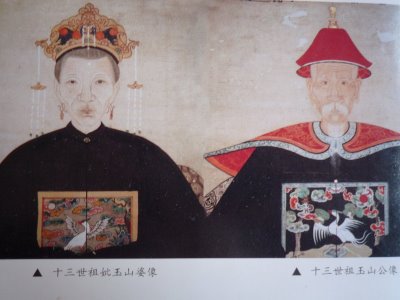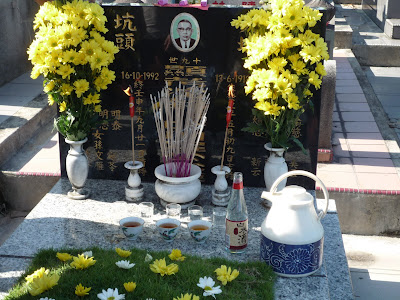Saturday, 7 March 2009, 2:24 pm | 4,929 views
Deng Chao
Recognition of our heritage and respect for diversity are not ignorance
I write in response to the Straits Times Forum Letter “Foolish to advocate the learning of dialects”, dated 7 March 2009, by Chee Hong Tat, Principal Private Secretary to the Minister Mentor.
In his letter, Mr Chee argued that it is foolish to advocate the use of Chinese dialects as this threatens the effectiveness of Singapore’s bilingual policy. He also asserted that Mandarin is the mother-tongue of all Chinese.
Mr Chee is wrong on all counts.
Firstly, the Chinese dialects which he refers to are rightfully languages. Spoken Chinese is distinguished by a high level of internal diversity. There are between six and twelve main regional groups of Chinese (depending on classification scheme). The key language groups include Wu (90 million speakers), Min (70 million) and Cantonese (or Yue) (70 million). Minnan (the southern branch of Min) includes also Hokkien, Teochew and Hainanese.
These Chinese languages are mostly mutually unintelligible tongues. They are roughly parallel to English, Dutch, Swedish, and so on among the Germanic group of the Indo-European language family. Within each Chinese language are supposedly more or less mutually intelligible dialects. For example, Cantonese has its Canton, Taishan, and other dialects, while Minnan has its Amoy, Taiwan, and other dialects. This is just like how English may be subdivided into its Cockney, Boston, Toronto, Texas, Cambridge, Melbourne, and other varieties. . (Source: Victor H. Mair, “What Is a Chinese ‘Dialect/Topolect?” Sino-Platonic Papers, 29 [September, 1991])
Our government has wrongly classified Hokkien, Teochew, Cantonese, Hainanese etc as dialects of Mandarin. “Dialect” implies regional variation of a common language. However, the Chinese languages listed above are mostly mutually unintelligible. Fangyan (方言), the term used by the Chinese to classify their languages, does not correspond to the English term “dialect”. Fangyan may be translated as “regional language”. Fangyan was also the term used during imperial China in reference to non-Chinese languages, including Korean, Mongolian, Manchu, Vietnamese, and Japanese, and during the Qing dynasty, the Western languages. linguists and experts have in many studies found the southern Chinese languages to be distinct and unique from Mandarin. (Jean DeBernardi, “Linguistic Nationalism: The Case of Southern Min” Sino-Platonic Papers, 25 [August, 1991])
Using the same written script do not make the various Chinese languages dialects, just as English, French, Spanish and German, while using the same alphabetical system of writing, are clearly distinct languages.
Clear difference between written and spoken forms
Linguists have demonstrated that there are clear differences between the spoken and the written forms of a language. Moreover, unlike the Western languages the Chinese written characters are based on pictographs or ideograms and do not reflect the phonetic pronunciation of its speech. Hence while the Chinese have historically shared the same written script, people from the different regions have orally expressed the written text in their own tongues without being right or wrong.
Secondly, Mandarin is only one member of the family of Chinese languages. It is based on the Beijing dialect, which is part of a larger group of North-Eastern and South-Western languages. Historically it is known to other Chinese as Guanhua (官话, i.e. official language. Hence the term “Mandarin”) or Beifanghua (北方话, language of the northerners). The forefathers of most Singaporean Chinese were from the far south. They speak only Cantonese, Hokkien, Teochew, Hainanese etc, while the Peranakans speak Baba Malay, but remain uniquely Chinese in their customs. Mandarin is by no stretch of our imagination, our mother tongue.
The Beijing form of Mandarin was only chosen to be the standard form of spoken Chinese through a ballot in China in 1913, during which the Cantonese language lost only by three votes. The Chinese national language campaign at that time was modeled after the Japanese one. The Japanese only sought to standardize its language based on the Tokyo form, without intending to eradicate the regional languages. However the Chinese sought to establish Mandarin as the national language with the intent of eliminating the regional languages. (Source)
Thirdly, the southern Chinese languages are bridges, and not obstacles to the affirming of our cultural ties with China and the learning of Mandarin. The southern Chinese languages are not pidgin Mandarin as some have deliberately attempted to portray. In fact Chinese language experts have identified some of them, such as Cantonese, Teochew, to be “fossilized languages” as they contain oral and written elements of Middle Chinese (古漢語) preserved since the Tang dynasty (618-907AD). Reading of ancient Chinese poems and verses in these languages has also been found to be much smoother than when using Mandarin as the southern Chinese languages have about eight to nine tones, whereas Mandarin only has four.
Heritage being lost in Singapore
An abundance of knowledge of Chinese traditions, values and history is contained in the oral and written embodiments of these southern Chinese languages, such as surviving literature, operas and stories. Sadly, the chain of passing down this heritage is being lost rapidly in Singapore. Familiarity with the richness of the past had given the first generations of Singaporean Chinese the advantage of appreciating Chinese culture and learning Mandarin. Cut off from our roots by the government’s clampdown on the southern Chinese languages, many young Singaporeans today have little affinity with the endless list of idioms they are forced to memorise. For our parents, they were meaningful as these idioms were spoken to them in their mother-tongues through stories by their parents, and usage in daily lives.
Moreover, many Singaporeans who have worked with other Chinese can testify to the economic and non-economic advantages of communicating with their counterparts in their native language, such Cantonese in Hong Kong, Minnan / Hokkien in Taiwan, Shanghainese in Shanghai, over the use of Mandarin.
The deliberate classification of the southern Chinese languages as dialects is a socio-political attempt to degrade them as second-class. The attempt to eradicate them is narrow-minded and short-sighted.
Singapore’s bilingual policy has certainly offered us some advantages. However, it is limited by its strait-jacket CMIO (Chinese, Malay Indian, Others) racial model – besides English, Chinese to speak Mandarin, Malay to speak Malay, Indians to speak Tamil, and Others – one of the above. The CMIO model in turn is a legacy of the colonial British government’s divide and rule strategy, which was developed on a poorly-conceived and out-dated 19th century classification of people by race. As a result of the official failure to think beyond the CMIO box, most Singaporeans are sadly ignorant that the Malay community have more to offer through its close interactions with the Bugis, Minangkabau and Javanese, while the Indian community has the wealth of the Tamils, the Malayalees, the Sikhs, and other groups to share.
Ignorance and bigotry are foolishness. Recognition of the heritage of our forefathers, and respect for diversity of our nation are not.
(More information on the Chinese languages can be found on my Facebook group http://www.facebook.com/home.php?#/group.php?gid=42688422747)
The original arrogant reply from PMO
Foolish to advocate the learning of dialects
I REFER to yesterday's article by Ms Jalelah Abu Baker ('One generation - that's all it takes 'for a language to die''). It mentioned a quote from Dr Ng Bee Chin, acting head of Nanyang Technological University's (NTU) Division of Linguistics and Multilingual Studies: 'Although Singaporeans are still multilingual, 40 years ago, we were even more multilingual. Young children are not speaking some of these languages at all any more.'
To keep a language alive, it has to be used regularly. Using one language more frequently means less time for other languages. Hence, the more languages a person learns, the greater the difficulties of retaining them at a high level of fluency.
There are linguistically gifted individuals who can handle multiple languages, but Singapore's experience over 50 years of implementing the bilingual education policy has shown that most people find it extremely difficult to cope with two languages when they are as diverse as English and Mandarin.
This is why we have discouraged the use of dialects. It interferes with the learning of Mandarin and English. Singaporeans have to master English. It is our common working language and the language which connects us with the world.
We also emphasised the learning of Mandarin, to make it the mother tongue for all Chinese Singaporeans, regardless of their dialect groups. This is the common language of the 1.3 billion people in China. To engage China, overseas Chinese and foreigners are learning Mandarin and not the dialects of the different Chinese provinces.
We have achieved progress with our bilingual education in the past few decades. Many Singaporeans are now fluent in both English and Mandarin. It would be stupid for any Singapore agency or NTU to advocate the learning of dialects, which must be at the expense of English and Mandarin.
That was the reason the Government stopped all dialect programmes on radio and television after 1979. Not to give conflicting signals, then Prime Minister Lee Kuan Yew also stopped making speeches in Hokkien, which he had become fluent in after frequent use since 1961.
Chee Hong Tat
Principal Private Secretary
to the Minister Mentor
PS, When you read such words as "stupid" being used, the PPS is merely dictating and stenographing the message. Don't kill the messenger, wait 10 years. Nothing will change until the dynasty expires.











































































